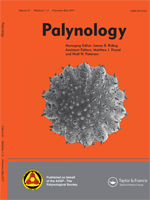The pollen morphology of 54 species and one variety of seven genera in Polygonatae including Clintonia, Disporopsis, Disporum, Maianthemum, Polygonatum, Smilacina and Streptopus was observed and studied in detail; of these, nine species were reported for the first time. Our results showed that the surface ornamentation of pollen grains of the studied materials could be divided into seven types, namely gemmate, granulate-foveolate, perforate, reticulate, rugulate, rugulate-perforate and verrucate. In line with previous studies, we believe that (i) Smilacina ginfushanicum should be classified into the genus Heteropolygonatum rather than the genus Smilacina; (ii) Polygonatum should be divided into section Polygonatum and section Verticillata; (iii) Smilacina and Maianthemum should be combined as one genus, i.e. Maianthemum sensu lato; and (iv) Clintonia, Disporum and Streptopus should be separated from the tribe Polygonatae.
How to translate text using browser tools
1 April 2018
Pollen Morphology of Polygonatae and Its Systematic Significance
Liu Wang,
Lei Gu,
Chunhai Zhao,
Jiaxi Liu
ACCESS THE FULL ARTICLE
It is not available for individual sale.
This article is only available to subscribers.
It is not available for individual sale.
It is not available for individual sale.

Palynology
Vol. 42 • No. 2
May 2018
Vol. 42 • No. 2
May 2018
palynology
pollen morphology
Polygonatae
systematics





